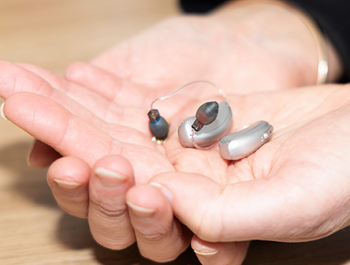Ear wax removal
23 January 2022
Ear wax build-up is the world's most common cause of hearing loss. Over time, wax can build up in the auditory canal connecting the outer ear to the eardrum. When this happens, you may notice a gradual loss of hearing. To avoid any damage to the canal, our team carefully remove any build-up of wax. The ear wax procedure is performed using a microscope and ACC approved micro-suction to gently remove ear wax, foreign bodies, and debris from the ears.
Removing ear wax in this way is a safer solution to using earbuds, which push the wax further into the ear. We use registered nurses to ensure the highest level of care, who can see your ear canal clearly using an endoscope (a small camera).
What is ear wax?
Ear wax is an oily material produced by glands within the ear canal and is a naturally occurring protective substance necessary for ear health. Ear wax repels insects, protects the ear from infection, traps dust and dirt from the environment and lubricates the canal. Ear wax is naturally excreted by the canal and can easily be removed using a soft damp cloth, wiping wax away from the canal entrance. However, wax can build up in the canal, causing pain and discomfort, so care is advised.
Wax build-up can be due to:
- excessive wax production
- a hearing aid or earplug use
- cotton buds or hair clips used to attempt to clear the wax
- individual problems with natural ear wax migration in the ear canal
Signs and symptoms of ear wax build-up:
- blocked or feeling of fullness in the ear
- reduced hearing
- discharge from the ear
- ringing or buzzing in your ears
- whistling from your hearing aid
- earache
- difficulty localising sounds
Micro-suction
Micro-suctioning of ears is a safe and thorough method of removing wax from the ear canals. By using a microscope, we can clearly visualise the magnified canal and safely remove wax, debris, or foreign objects with the use of a gentle vacuum or special tools.
The procedure is not painful, but you will feel a cool wind sensation and hear a loud suction sound.
There may be some discomfort if the wax is hard and dry, so we recommend applying some olive oil or any vegetable oil the night before your appointment to soften the wax. For micro-suction, we prefer olive oil instead of other products on the market as this is something you may already have in your kitchen and is gentle on the canals.
Do not put anything in your ear if you have a perforation or grommets.
Commonly asked questions
How should I clean my ears?
The ears are self-cleaning, but sometimes this natural process does not happen, which means you may need to have the wax removed through micro-suction. Usually, a simple wipe with a damp cloth will survive to remove the wax from the canal entrance. Do not attempt to put anything in your ear, as this could cause damage.
How often would I need to have wax removal?
If you have ongoing issues with wax build-up or wear hearing aids, it would be advisable to have wax removal 6 -12 monthly. Still, everyone is a little different, so talking with our ear nurse means we can first perform an assessment and recommend when would be best to return for your next appointment.
Is Waxsol ok to use?
We prefer you to use olive or vegetable oil for micro-suction before your appointment. Vegetable oil is gentle on the canals and readily available in most kitchens. A few drops of warm oil in your ears the night before your appointment will soften the wax.
If you'd like to book an appointment for ear wax removal, contact our Christchurch team.
Book at our Christchurch ClinicGet in touch





